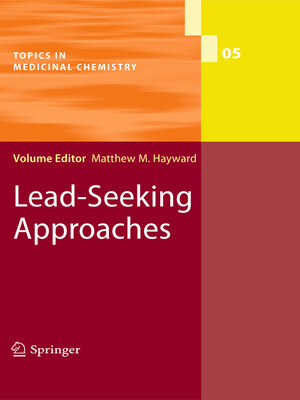
Sign up to save your library
With an OverDrive account, you can save your favorite libraries for at-a-glance information about availability. Find out more about OverDrive accounts.
Find this title in Libby, the library reading app by OverDrive.



Search for a digital library with this title
Title found at these libraries:
| Library Name | Distance |
|---|---|
| Loading... |
High quality leads provide the foundation for the discovery of successful clinical development candidates, and therefore the identi?cation of leads is an essential part of drug discovery. The process for the identi?cation of leads generally starts with the screening of a compound collection, either an HTS of a relatively large compound collection (hundreds of thousands to one million plus compounds) or a more focused screen of a smaller set of compounds that have been preselected for the target of interest. Virtual screening methods such as structure-based or pharmacophore-based searches can complement or replace one of the above approaches. Once hits are identi?ed from one or more of these screening methods, they need to be thoroughly characterized in order to con?rm activity and identify areas in need of optimization. Finally, once fully characterized hits are identi?ed, preliminary optimization through synthetic modi?cation is carried out to generate leads. Parallel optimization of all properties, including biological, physicochemical, and ADME is the most ef?cient approach to the identi?cation of leads. Hit characterization is described in the previous chapter. The focus of this chapter is on hit optimization and the identi?- tion of leads. After a general overview of these processes, examples taken from the literature since 2001 will be used to illustrate speci?c points. There are also a number of excellent reviews covering the lead identi?cation process [1–6].







